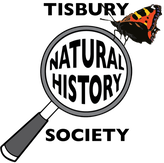|
Mid-March into early April is the time of a “blackthorn winter”: a cold spell when the blackthorn is in bloom. This is perhaps because the combination of different strains of the species and the varied micro-climates of their growing locations mean that you can find blackthorn in flower somewhere for more than a month, during which it is likely that there will be at least one cold spell. Or perhaps it is that blackthorn scrub, with its clouds of flowers at their peak, look like the bushes have been covered with snow.
The small white flowers bloom on short stalks from buds along the spines and do so before the leaves appear. En masse, the bloom provides a welcome early source of nectar for insects. These pollinate the flowers, which then develop the distinctive blue-black sloes. The tree grows naturally in scrub, copses, and woodland, and is commonly used to form a cattle-proof hedge. It favours sunny positions, and when left uncut can develop into considerable thickets, such as those in the Oddbrook valley. Mature trees can grow to a height of around 6–7m and live for up to 100 years. The deep brown bark is smooth, and twigs form distinctive, straight, side shoots which develop into thorns. Its trunk and stems form a dense wood which is good for burning and straight stems have been used for walking sticks, including the Irish shillelagh. The foliage provides food for the caterpillars of several moths. The dense thickets provide sheltered nesting sites for birds, which then feast on these caterpillars, and later on the sloes. The scarce brown hairstreak butterfly lays its eggs on blackthorn. This is the largest and brightest of the hairstreak butterflies, the female looking a gorgeous golden colour in flight. However, in common with other hairstreaks, it is quite a small butterfly and notoriously easy to overlook. They spend most of their adult lives perched in the tops of trees, out of sight, lapping honeydew from the leaves. If you are lucky, you might see a female when she descends to lay eggs, nearly always on blackthorn twigs in hedges or bits of sheltered scrub. Our knowledge of the local distribution of this butterfly is improving all the time, due to the efforts of a small number of lepidopterists who tirelessly search suitable locations for these tiny eggs. Correctly identified, these are a reliable indicator of presence, although not necessarily breeding success, but gets around the difficulties of spotting an adult on the wing. The population appears to be spreading westwards from the area north-east of Salisbury. As eggs have been found in the vicinity of Grovely Wood, who knows, they may be present hereabouts without being recorded. Eyes peeled this August/September. by Andrew Graham Comments are closed.
|
Photo: Avocets (Izzy Fry)
The headers display photos taken by our members. Do get in touch via the Contact Form if you'd like to submit a photo for selection.
Archives
May 2024
Categories
All
|

 RSS Feed
RSS Feed